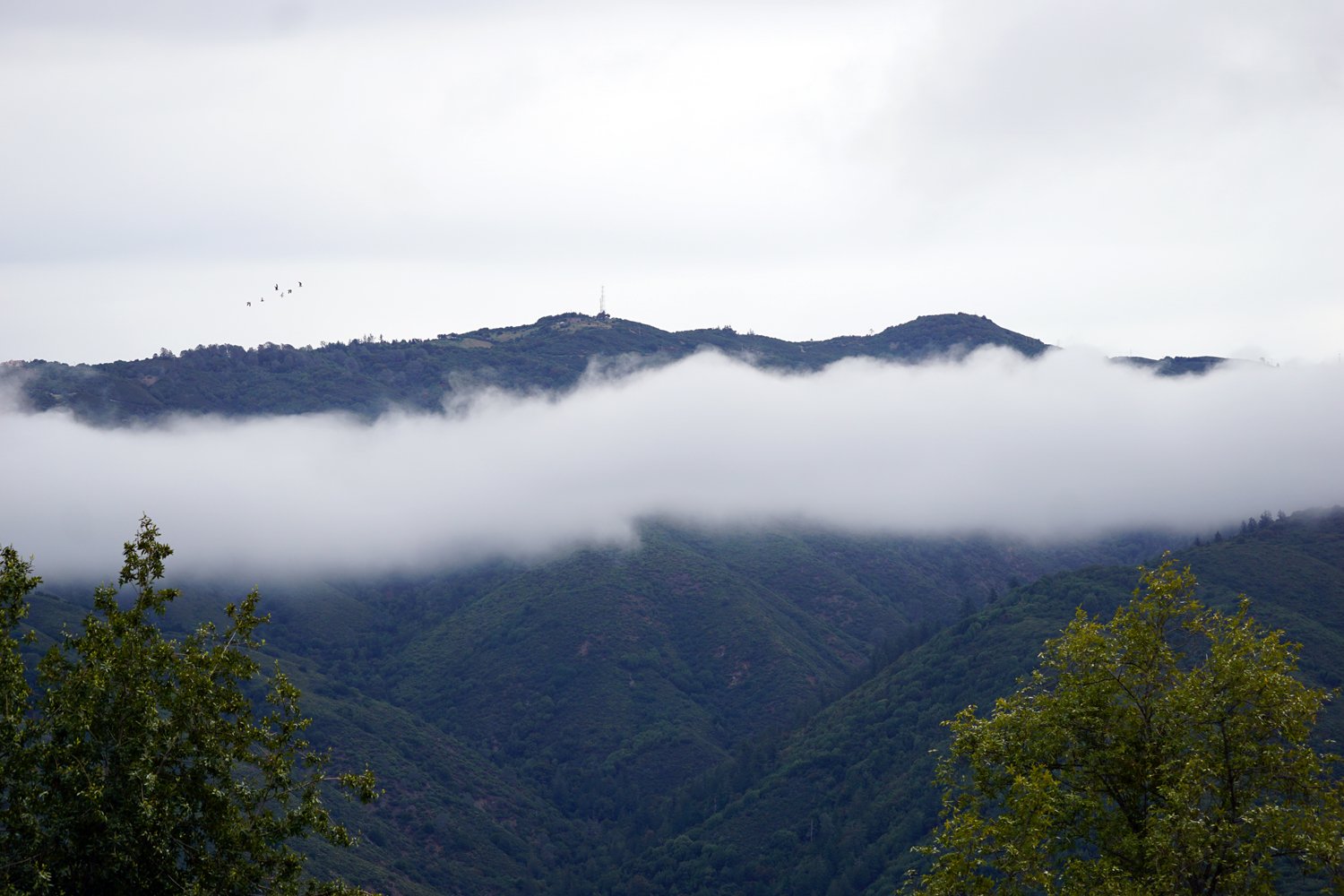As climatic conditions shift, many long-living forests will be unable to also shift in response. In particular, cold-adapted forests, including the boreal forests of Canada and Alaska and the montane forests of California’s Sierra Nevada, are experiencing a contraction in their ranges. As global temperatures rise, fewer geographic areas remain within the optimal climate conditions for these trees, effectively reducing their habitat.
One area where researchers are seeing the potential for more resistance to the effects of climate change are within forests located in areas that experience what is known as cool air pooling.
What is cool air pooling?
Cool air pooling is a temperature inversion that happens when cold air travels downslope into a valley or depression, causing the air at lower elevations to be cooler than the air at higher elevations. Previous research has indicated that cold-air pooling could serve as microrefugia for species and ecosystem functions, especially as the climate changes.
Researchers from the University of Vermont and the USDA Forest Service looked at three distinct topographies in New England in order to analyze the correlation between cold-air pooling dynamics and forest composition. At each study site, a network of elevational transects was set up to monitor air temperatures and assess influences on forest composition.
The presence of a temperature inversion was measured every hour at each site. The temperature differential was also calculated from the first plot and last plot on each transect.
Cold-air pooling was found to be a common phenomenon at all the study sites, occurring frequently across different seasons and times of day, contrary to the traditional view that it is primarily a nocturnal and winter phenomenon.
Researchers measured the impact of cold-air pooling on forest composition across elevational gradients. Sites with more frequent and intense cold-air pools showed inverted patterns of forest composition. The study found that areas of lower elevations, which are normally warmer and support different species, maintained cold-adapted species such as conifers, effectively reversing the expected distribution of plant species with elevation.
Implications of cool air pooling as part of climate change adaption strategies for forest conservation
By altering forest composition and maintaining cooler conditions in certain areas, cold-air pools might help buffer these ecosystems against the broader impacts of climate change. This could preserve not only the species adapted to cooler climates but also the ecological functions they support, such as carbon storage and water regulation.
The incorporation of this microclimatic phenomenon into climate models, conservation planning, and ecosystem management to better predict and mitigate the impacts of global climate change.
The study
Pastore, M. A., Classen, A. T., D’Amato, A. W., English, M. E., Rand, K., Foster, J. R., & Adair, E. C. (2024). Frequent and strong cold‐air pooling drives temperate forest composition. Ecology and Evolution, 14(4), e11126. doi.org/10.1002/ece3.11126
Additional references
Dobrowski, S. Z. (2011). A climatic basis for microrefugia: The influence of terrain on climate. Global Change Biology, 17, 1022–1035. DOI: 10.1111/j.1365-2486.2010.02263.x
McLaughlin, B. C., Ackerly, D. D., Klos, P. Z., Natali, J., Dawson, T. E., & Thompson, S. E.(2017). Hydrologic refugia, plants, and climate change. Global Change Biology, 23, 2941–2961. DOI: 10.1111/gcb.13629
Pastore, M. A., Classen, A. T., D’Amato, A. W., Foster, J. R., & Adair, E. C. (2022). Cold-air pools as microrefugia for ecosystem functions in the face of climate change. Ecology, 103, e3717. DOI: 10.1002/ecy.3717
Fonte : National Geographic
















